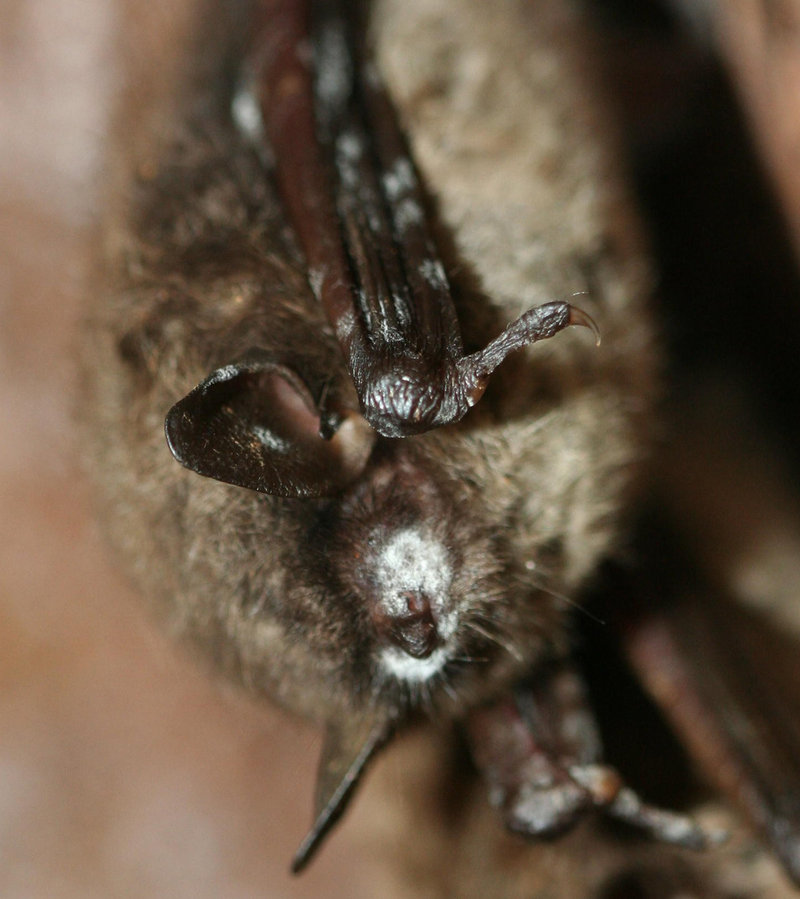WASHINGTON — The Interior Department launched a national plan Tuesday to combat a mysterious disease that has killed more than a million bats in the Eastern and Southern U.S. and is spreading west.
The disease, called white-nose syndrome, is caused by a fungus. The disease has spread to 16 states and three Canadian provinces.
Interior Secretary Ken Salazar said the new plan provides a road map for more than 100 federal, state, and tribal agencies and scientific researchers that are tracking the disease and attempting to combat it.
“White-nose syndrome threatens far-reaching ecological and economic impacts,” Salazar said. “We’ve learned a lot in the past few years about the disease, but there is much more work to be done to contain it.”
White-nose syndrome, first identified in upstate New York in 2006, has been found along the Eastern seaboard from New Hampshire to North Carolina, as well as in West Virginia, Pennsylvania, Ohio, Indiana, Kentucky and Tennessee. The fungus has been found in Oklahoma and Missouri, although no bats are known to have died from white-nose syndrome in those states.
The disease has also been found in New Brunswick, Ontario and Quebec. The fungus, but not yet the disease, has been found in Nova Scotia.
Caves on federal lands as far west as Colorado and Wyoming have been closed to the public to try to stem spread of the fungus, but scientists don’t know how the disease is transmitted or even how it is killing the bats.
The fungus grows on the bat’s nose, wings and ears, and one theory is that it irritates these membranes, causing bats to wake often during hibernation and burn so much energy that they starve to death.
But there are signs the fungus is directly damaging wings, which are important for maintaining water balance and blood pressure control, said Jeremy Coleman, who heads the U.S. Fish and Wildlife Service’s response to the problem. The service, an arm of the Interior Department, is leading the federal response.
The disease does not affect humans, but the fungus can be spread by people’s footwear, and officials said it is important for people to clean their shoes before and after they enter caves.
Lab tests show that several drugs can fight the germ and that some antiseptics might help decontaminate areas where bats live or the shoes and hands of people who visit them, researchers said last fall.
“Decontamination is in my mind the most immediate need,” because people may be helping to spread the disease, Coleman said. That thinking is behind a decision by federal officials to close caves in dozens of states, including some where white-nose syndrome has not yet been found.
The Interior Department has spent nearly $11 million on the syndrome since 2007.
Researchers working with the U.S. Geological Survey have identified Geomyces destructans, a fungus new to science, as the presumed cause, said Ann Froschauer, a spokeswoman for the wildlife service. Officials have developed decontamination protocols to reduce transmission of the fungus, monitoring strategies and technical procedures to diagnose it, she said.
Copy the Story Link
Send questions/comments to the editors.



Success. Please wait for the page to reload. If the page does not reload within 5 seconds, please refresh the page.
Enter your email and password to access comments.
Hi, to comment on stories you must . This profile is in addition to your subscription and website login.
Already have a commenting profile? .
Invalid username/password.
Please check your email to confirm and complete your registration.
Only subscribers are eligible to post comments. Please subscribe or login first for digital access. Here’s why.
Use the form below to reset your password. When you've submitted your account email, we will send an email with a reset code.